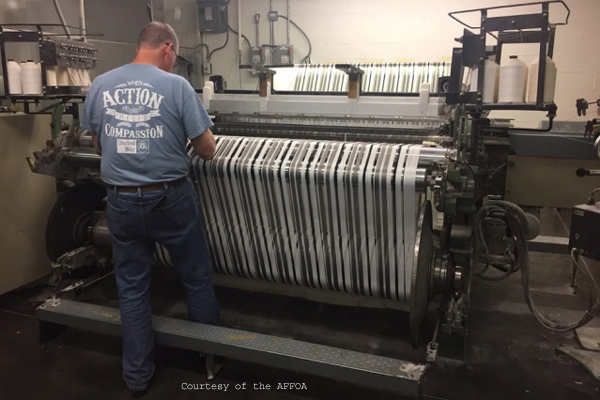Smart clothing is emerging as a very interesting application for IoT. Last week, the Advanced Functional Fabrics of America (AFFOA) opened in Cambridge, MA near the MIT campus. MIT invested significant funding in the AFFOA headquarters that will be used for education and workforce development in the area. The facility includes a Fabric Discovery Center that provides end-to-end prototyping from fiber design to system integration of new textile-based products. AFFOA headquarters also includes startup incubation space for companies spun out from MIT and other partners who are innovating advanced fabrics and fibers for applications ranging from apparel and consumer electronics to automotive and medical devices.
AFFOA is a public-private partnership, part of Manufacturing USA, which is working to develop and introduce U.S.-made high-tech fabrics that provide services such as health monitoring, communications, and dynamic design. In the process, AFFOA will try to facilitate economic growth through U.S. fiber and fabric manufacturing that left to other lower wage level countries many years ago. The headquarters in Cambridge is first Fabric Design Center and others are planned around the country. AFFOA has already established other centers at the University of Massachusetts at Lowell and another at MIT Lincoln Laboratory in collaboration with the U.S. Army Natick Soldier Research, Development and Engineering Center which has pioneering nanotechnologies for new soldier protection and survivability capabilities.
AFFOA CEO and MIT professor of materials science and engineering, Yoel Fink said, “The institute seeks to create “fabrics that see, hear, sense, communicate, store and convert energy, regulate temperature, monitor health, and change color.” He summed it up as the AFFOA aims to catalyze the creation of a whole new industry that envisions “fabrics as the new software.” While many people have attached electronics to fabrics, AFFOA envisions embedding them within the fibers. However, the center’s goal is to develop the technology infrastructure for advanced, Internet-connected fabric products that will enable new business models. They even think they will be able to offer develop “fabrics as a service” that creates more value and profit potential to the industry.

Some examples have already been created include a backpack that is programmable, produced by JanSport, an AFFOA member. It is made of a special fabric that enables the wearer to program the backpack using a smartphone app call “Looks.” The app allows the backpack to associate and share information that is context-dependent to help students better connect on campuses, enable professionals to network effectively at conference, increase security in elementary schools, store memories and information and enable dynamic advertising and online purchasing. It can even notify the owner if it gets lost.
A second product platform developed is “Faric LiFi” that uses LED-based lighting systems to broadcast data to any receiver within direct line of sight at extremely high bandwidths. It can be used for accurate tracking and navigation indoors where GPS does not penetrate well. Imagine baseball caps or other clothing could be worn that would direct you around the stadium (maybe directly to your seats) where you could also receive broadcast information in whatever language you chose. The future in smart fabrics is bright and many applications have not even been thought of yet.

